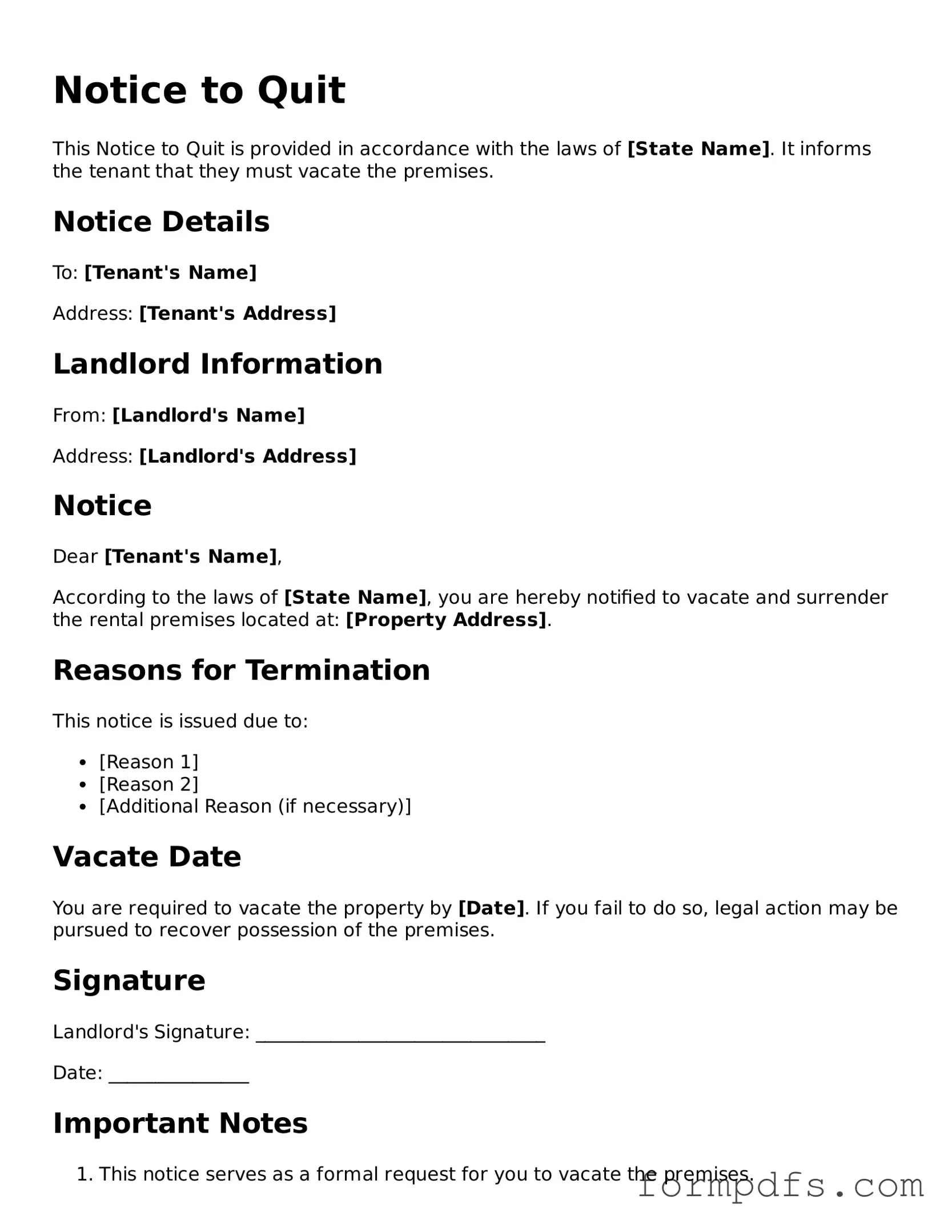What is a Notice to Quit form?
A Notice to Quit form is a legal document used by landlords to inform tenants that they must vacate the rental property. This notice typically indicates the reason for the eviction and provides a specific timeframe within which the tenant must leave. It serves as a formal communication and is often the first step in the eviction process.
When should a landlord issue a Notice to Quit?
A landlord may issue a Notice to Quit when a tenant fails to pay rent, violates lease terms, or engages in illegal activities on the property. Additionally, a landlord may use this notice if they wish to terminate a month-to-month lease or if the lease has expired. The specific reasons for issuing the notice will depend on state laws and the terms of the lease agreement.
How long does a tenant have to respond to a Notice to Quit?
The response time for a tenant varies by state and the reason for the eviction. Typically, a tenant may have anywhere from a few days to several weeks to vacate the property or respond to the notice. It is essential for tenants to check local laws to understand their rights and obligations regarding the Notice to Quit.
Can a tenant contest a Notice to Quit?
Yes, a tenant can contest a Notice to Quit if they believe it was issued unfairly or if they have valid defenses against the eviction. Common defenses include proving that the rent was paid, the notice was not served properly, or that the landlord did not follow legal procedures. Tenants may need to seek legal advice to navigate this process effectively.
What information should be included in a Notice to Quit?
A Notice to Quit should include the tenant's name, the address of the rental property, the date the notice is issued, and the specific reasons for the eviction. Additionally, it should state the time frame for the tenant to vacate the property. Clear and concise language helps ensure that the notice is understood by the tenant.
Is a Notice to Quit the same as an eviction notice?
No, a Notice to Quit is not the same as an eviction notice, although they are related. The Notice to Quit is the initial document that informs the tenant of the landlord's intention to terminate the tenancy. If the tenant does not comply with the Notice to Quit, the landlord may then proceed with filing for eviction in court, which is a separate legal process.
What happens if a tenant ignores a Notice to Quit?
If a tenant ignores a Notice to Quit, the landlord may proceed with legal action to evict the tenant. This usually involves filing an eviction lawsuit in the local court. The court will then schedule a hearing where both the landlord and tenant can present their cases. If the court rules in favor of the landlord, the tenant will be ordered to vacate the property.
Can a landlord issue a Notice to Quit without a lease agreement?
Yes, a landlord can issue a Notice to Quit even if there is no formal lease agreement in place. In such cases, the tenancy may be considered a month-to-month agreement. The landlord must still follow the appropriate legal procedures and provide adequate notice as required by state law to terminate the tenancy.
What should a tenant do upon receiving a Notice to Quit?
Upon receiving a Notice to Quit, a tenant should carefully read the document to understand the reasons for the eviction and the time frame given to vacate. It is advisable to seek legal advice if there are questions or concerns. Tenants should also consider communicating with the landlord to discuss the situation, as there may be opportunities to resolve the issue without proceeding to eviction.
